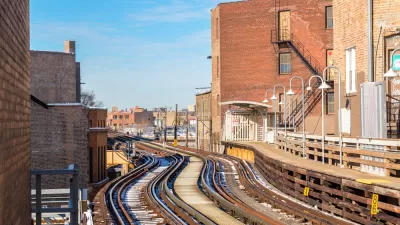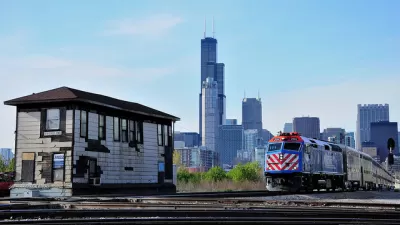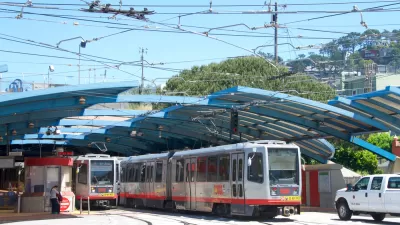As Chicago's population slowly dwindles, Yonah Freemark argues that the city needs to take advantage of one of its greatest assets: its transit network. Housing for residents of all incomes near transit stops may be the key.

Chicago is caught in a paradox: the city's overall population is stagnant. And yet, the city is gentrifying.
By most accounts, Chicago remains an attractive, vibrant city. So much so that wealthier residents are snatching up rental properties, and driving up rents, while displacing some of the city's poorer residents. The result is not only a less egalitarian city, but also one that fails to capitalize on the city's extensive, fully built-out transit network. That's the analysis of Yonah Freemark, a project manager with Chicago's Metropolitan Planning Council.
While Chicago may seem like the ultimate in transit-oriented cities—a large percentage of the city's residences and even larger percentage of its employment centers are within a mile radius of transit—Freemark contends that higher-income residents do not use transit as much as their less wealthy counterparts. They also live at lower densities. Thus, Chicago may be cannibalizing itself.
"[W]hy are Chicago’s vibrant, transit-oriented communities that are attracting people still losing population? People who want to live in these areas but cannot afford high-price homes instead often choose to move to new suburban communities, which results in more traffic congestion and higher transportation costs, not to mention encouraging construction on previously undeveloped land," writes Freemark.
This problem, though, is not just one of economics. It's also one of policy.
"One of the primary reasons why homes and apartments in many of Chicago’s neighborhoods are so expensive, and why population has declined, is that zoning has limited the construction of new housing," writes Freemark. Freemark lauds the city's 2013 transit oriented development ordinance but contends that much more remains to be done until Chicago successfully marries its 20th century infrastructure with 21st century urban trends.
FULL STORY: Why should Chicago focus growth near transit?

Maui's Vacation Rental Debate Turns Ugly
Verbal attacks, misinformation campaigns and fistfights plague a high-stakes debate to convert thousands of vacation rentals into long-term housing.

Planetizen Federal Action Tracker
A weekly monitor of how Trump’s orders and actions are impacting planners and planning in America.

In Urban Planning, AI Prompting Could be the New Design Thinking
Creativity has long been key to great urban design. What if we see AI as our new creative partner?

Cal Fire Chatbot Fails to Answer Basic Questions
An AI chatbot designed to provide information about wildfires can’t answer questions about evacuation orders, among other problems.

What Happens if Trump Kills Section 8?
The Trump admin aims to slash federal rental aid by nearly half and shift distribution to states. Experts warn this could spike homelessness and destabilize communities nationwide.

Sean Duffy Targets Rainbow Crosswalks in Road Safety Efforts
Despite evidence that colorful crosswalks actually improve intersection safety — and the lack of almost any crosswalks at all on the nation’s most dangerous arterial roads — U.S. Transportation Secretary Duffy is calling on states to remove them.
Urban Design for Planners 1: Software Tools
This six-course series explores essential urban design concepts using open source software and equips planners with the tools they need to participate fully in the urban design process.
Planning for Universal Design
Learn the tools for implementing Universal Design in planning regulations.
Appalachian Highlands Housing Partners
Gallatin County Department of Planning & Community Development
Heyer Gruel & Associates PA
Mpact (founded as Rail~Volution)
City of Camden Redevelopment Agency
City of Astoria
City of Portland
City of Laramie





























